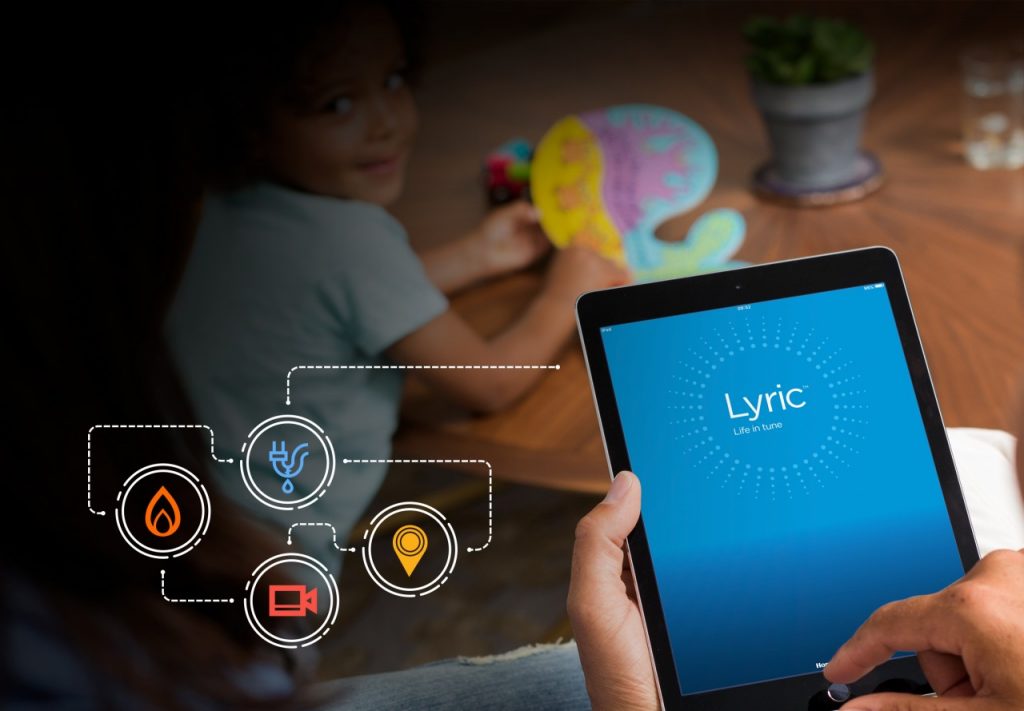Honeywell’s connected home portfolio, powered by Azure, helps save money and provides peace of mind
You just went on a terrific vacation. You had great weather, wonderful family bonding and delicious meals. And then you came home and found your water heater sprung a leak and created a lot of damage. This was not the back-to-reality moment you envisioned.
But thanks to Honeywell’s presence in more than 150 million homes worldwide, and its collaboration with Microsoft, homeowners can monitor what is happening at home while they’re away.
With Honeywell Lyric, a broad range of connected products for the home, you can handle problems from afar and may save money by dealing with them early. Honeywell offers a full suite of connected home products including thermostats, devices that detect water leaks and freezes, and self-monitored security cameras that are all controlled through a mobile app.
Through the app, the homeowners can control their thermostat to manage energy usage, keep an eye on their newborn baby in the crib from another room and be notified of an unexpected entry. The system can alert the homeowner when there’s a water leak from the water heater or dishwasher, for example, so they can take quick action.
Microsoft Azure is the backbone of the infrastructure that runs Honeywell’s Connected Home system. Honeywell decided to host the system on Microsoft’s Azure because of its high availability and reputation as the trusted cloud platform, which is critical to delivering that peace of mind.
“Our many years of strong collaboration with Microsoft is really key,” says Scott Harkins, vice president for Honeywell Connected Home.
“Microsoft Azure has helped us find all kinds of interesting ways to continue adding value for consumers, even after they’ve purchased our products. Wi-Fi connected water leak detectors and home security systems may help homeowners create a new relationship with their insurance provider and potentially save them money and energy. Connected thermostats bring brand new value to the homeowner since the Lyric thermostat knows when you’re home or away, and will automatically set the temperature.”
Honeywell bridges the physical and virtual worlds with its connected products, an evolution of their century-plus experience in making devices for homes all over the globe.
Harkins says Honeywell’s been in the process of a substantial transformation to a software industrial company over the past few years.
“Our growth is driven by connected products and we offer our customers tremendous value through the power of those connected devices,” Harkins says. “Growth is about connectivity. These products are about bringing consumers a convenient way to interact with their home, saving money while they’re away.”
With Azure, Honeywell has more than halved the time it takes to develop a feature and get it running.
Azure IoT Hub provides commands and device-to-cloud telemetry data for the internal application logic running in Azure. It increases the speed, reduces the latency and improves the quality of Honeywell’s device-to-cloud communications. The company’s connected home can then absorb millions of events per second from Honeywell devices and stream them into multiple applications in the cloud.
With analytics, Honeywell will be able to predict device health, potentially prevent failures, and better understand how customers interact with the systems that keep their homes comfortable, safe and secure. By using real-time data streaming from a connected thermostat, for example, the company can provide maintenance alerts to HVAC professionals who can proactively fix problems and maintain high levels of service.
“The data we collect in Azure creates a flywheel that lets us improve our products,” says Harkins. “We release a connected product to market, we collect information from that product, and we learn about how consumers use it. We find ways to improve it, and then we release another generation. This flywheel makes sure we keep creating new value for the customer and improve the way our products operate.”
Honeywell has also opened its APIs to third party developers so that consumers can use other apps, such as Amazon Alexa and Google Home, to control Honeywell’s connected products through their voices or other means of home automation.








